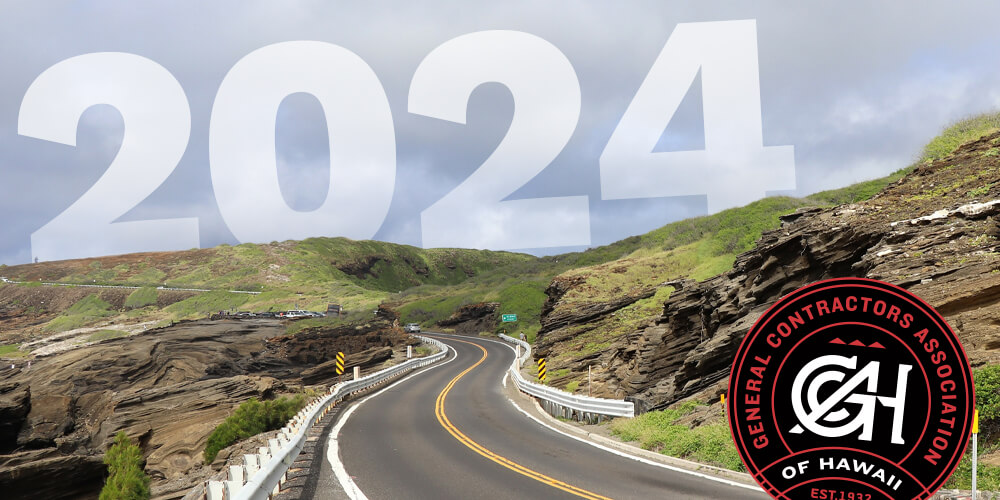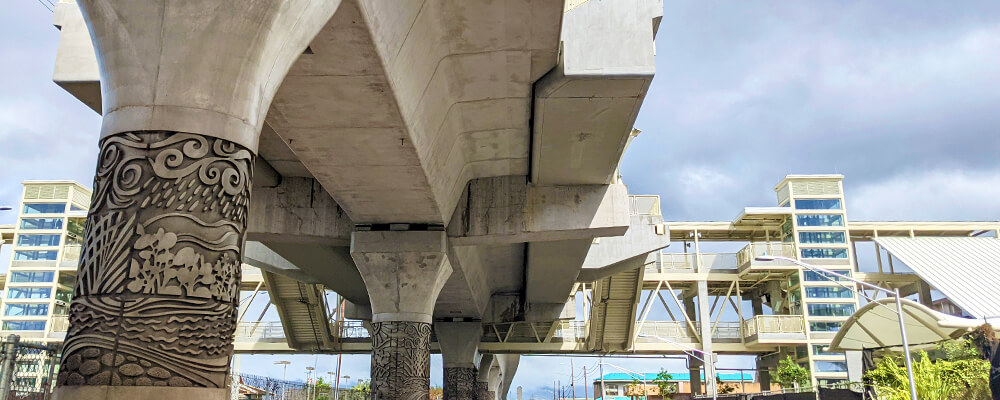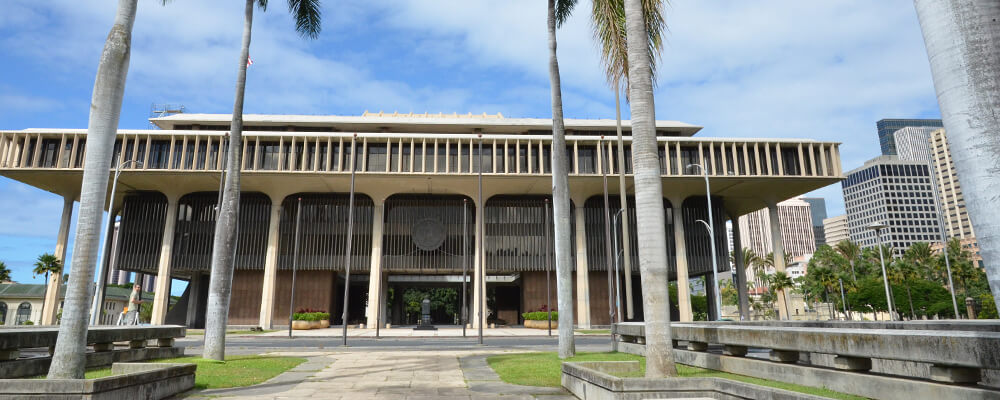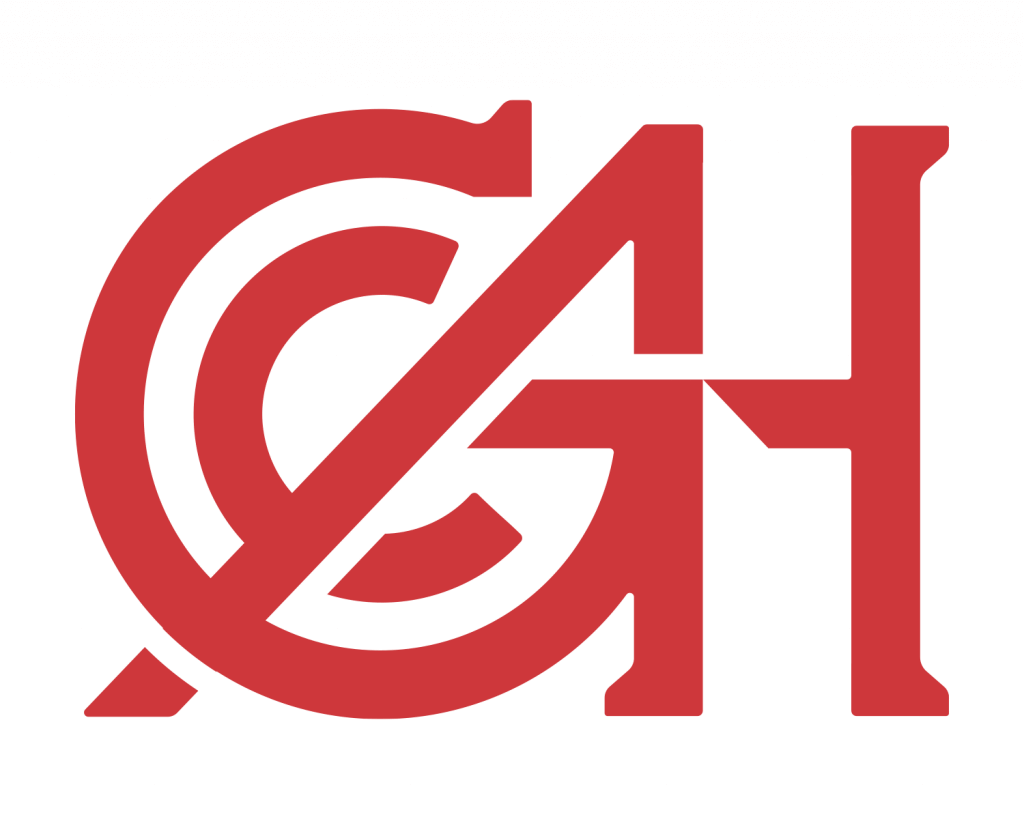
What Does 2024 Hold for Hawaii’s Construction Industry?

Cheryl Walthall
GCA Executive Director
Whenever we begin a new year, we’re filled with optimism. It is a time to start afresh, let go of the past, and hope things will get better.
As we enter 2024, however, there is a great deal of upheaval in the world. Each time a war breaks out, it means uncertainty for Hawaii’s construction industry, but there are also bright spots to offset some of those challenges.
Supply-Chain Issues Continue
Supply-chain challenges that began during the pandemic continue to hamper the construction industry. This has put a financial strain on many contractors who are being held to estimates that were included in bids that may have been submitted over a year ago.
The Israel-Hamas war potentially will create more upheaval for our industry and is a reminder that all global issues ultimately have local repercussions. Last year’s wildfires in Lahaina are still top of mind for all of us in Hawaii and as rebuilding Maui begins, we hope supply-chain issues do not add to the island’s challenges.

Transit-Oriented Development
Despite the challenges with Oahu’s rail system, transit-oriented development (TOD) offers great opportunities. The Honolulu Authority for Rapid Transition (HART) is expected to award the last big contract for the elevated guideway and six stations from Kalihi to Civic Center in April 2024. The New Aloha Stadium Entertainment District (NASED) and Kamehameha Schools’ Kapalama Kai redevelopment plan also offer tremendous potential for construction along the Honolulu Skyline route. Once the full rail system is complete, we anticipate more TOD projects coming online, with the potential to positively support the construction landscape for decades to come.
Infrastructure Investment Funding
The Infrastructure Investment and Jobs Act (IIJA), commonly known as the Bipartisan Infrastructure Law, is expected to provide a welcome economic boost and be a significant source of project funding this year and over the next several years.
...nearly $1.2 billion in IIJA funding has been allocated for Hawaii. The lion’s share of this — $935.2 million — will fund roads, bridges, public transportation, ports and airports.
As a state, we have not made investment in transportation infrastructure a priority. There are currently 84 bridges and more than 664 miles of highway in poor condition. The IIJA will help us rebuild our roads and represents the single largest dedicated bridge investment since the construction of the interstate highway system.
These federal allocations will take time to be awarded for projects, but we know that to date, nearly $1.2 billion in IIJA funding has been allocated for Hawaii. The lion’s share of this — $935.2 million — will fund roads, bridges, public transportation, ports and airports.

Military Projects
Another bright spot for construction and the economy is military projects. Hawaii’s largest military project is the $3.42 billion construction of Dry Dock 5 at Pearl Harbor Naval Shipyard and Intermediate Maintenance Facility. It is targeted for completion in 2027 and, according to the Navy, is the first of many investments. It is projected to create an estimated 2,500 new jobs locally during the construction period.
Workforce Development
Although there is great potential for the construction industry, we will not be able seize these opportunities without appropriate levels of qualified employees. The GCA will continue to invest in the next generation of construction professionals by offering scholarships for those pursuing engineering and providing training for future leaders through our Construction Leadership Council.

Promoting Laws to Support Fairness
This year, the GCA has introduced legislation to increase procurement transparency and ethics by requiring cash or protest bonds to be returned to the initiating parties, minus administrative costs, except in cases where the appeal was frivolous or made in bad faith. This will bring the state into alignment with all other states that require cash or protest bonds for administrative appeals.
Stay tuned as we continue to move forward in 2024!
We hope you enjoyed this featured article! Comments or feedback? Send an email to communications@gcahawaii.org.
Mahalo!
